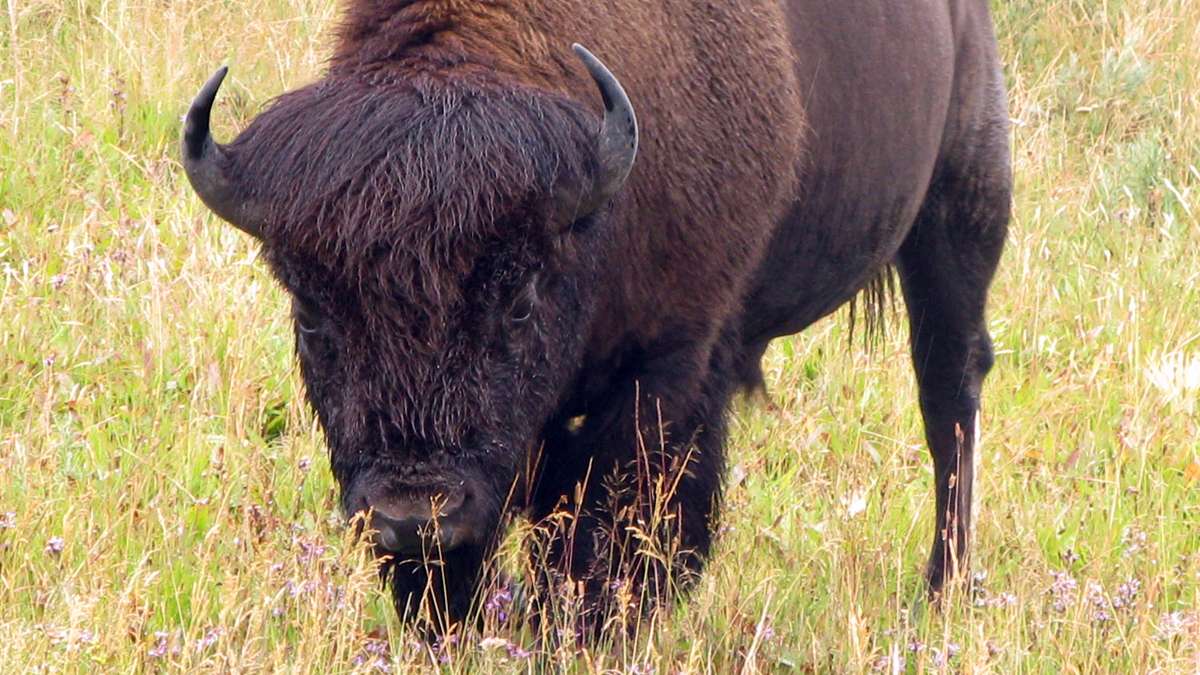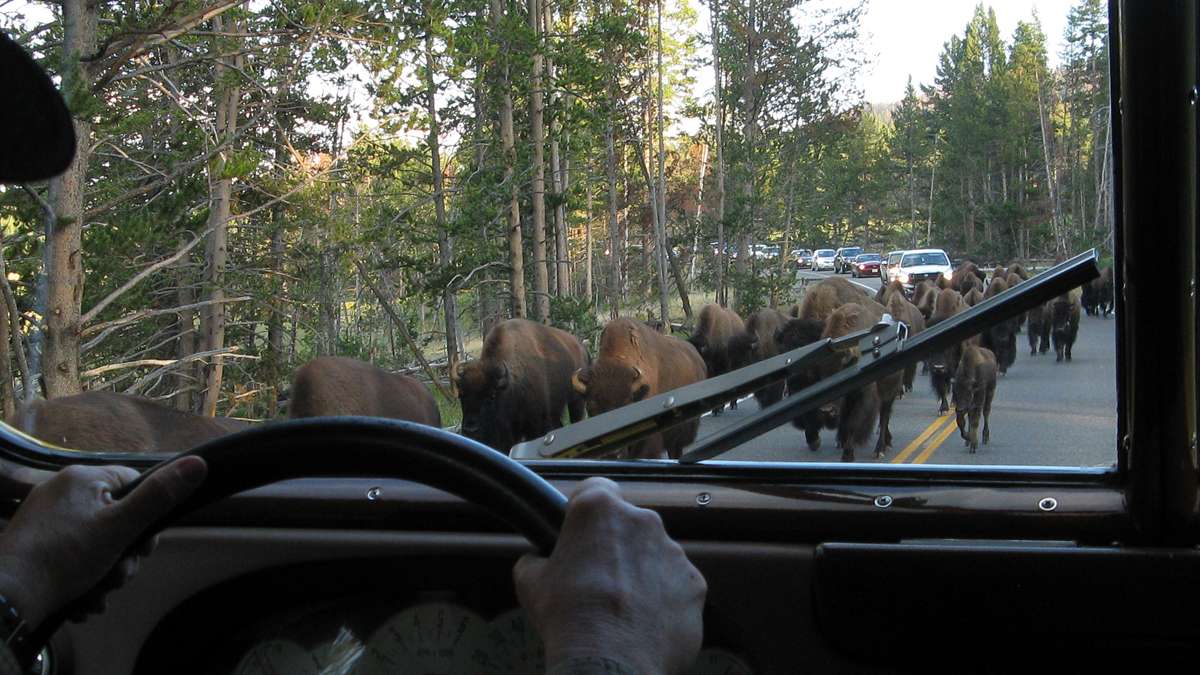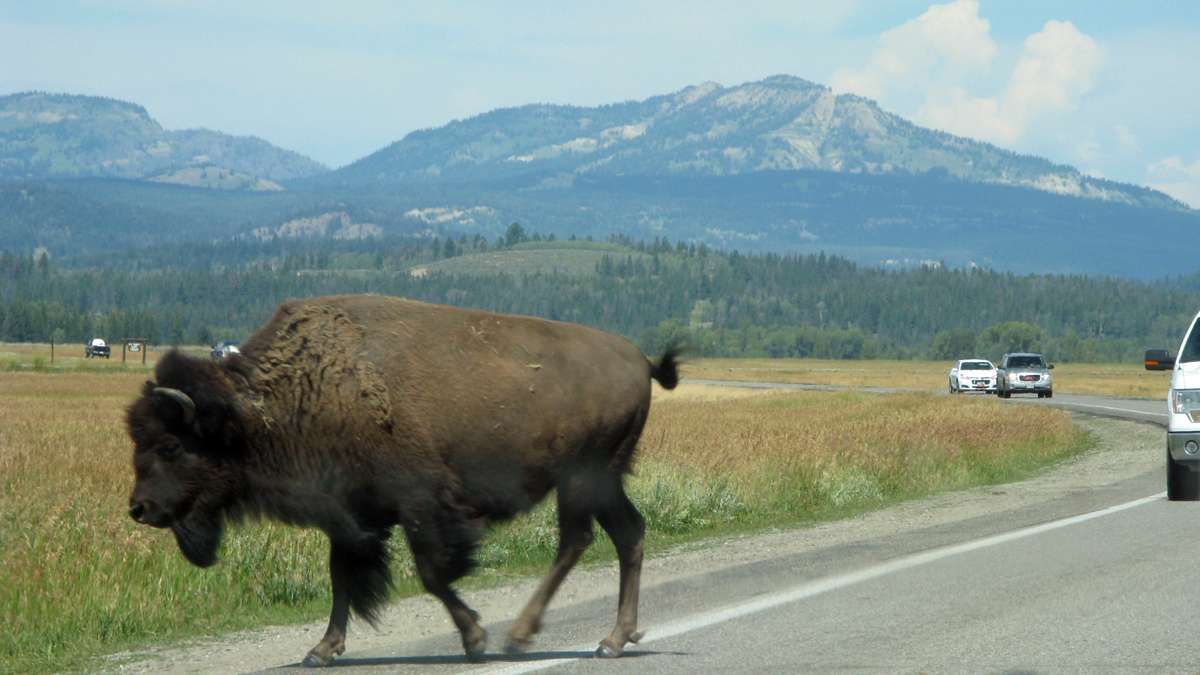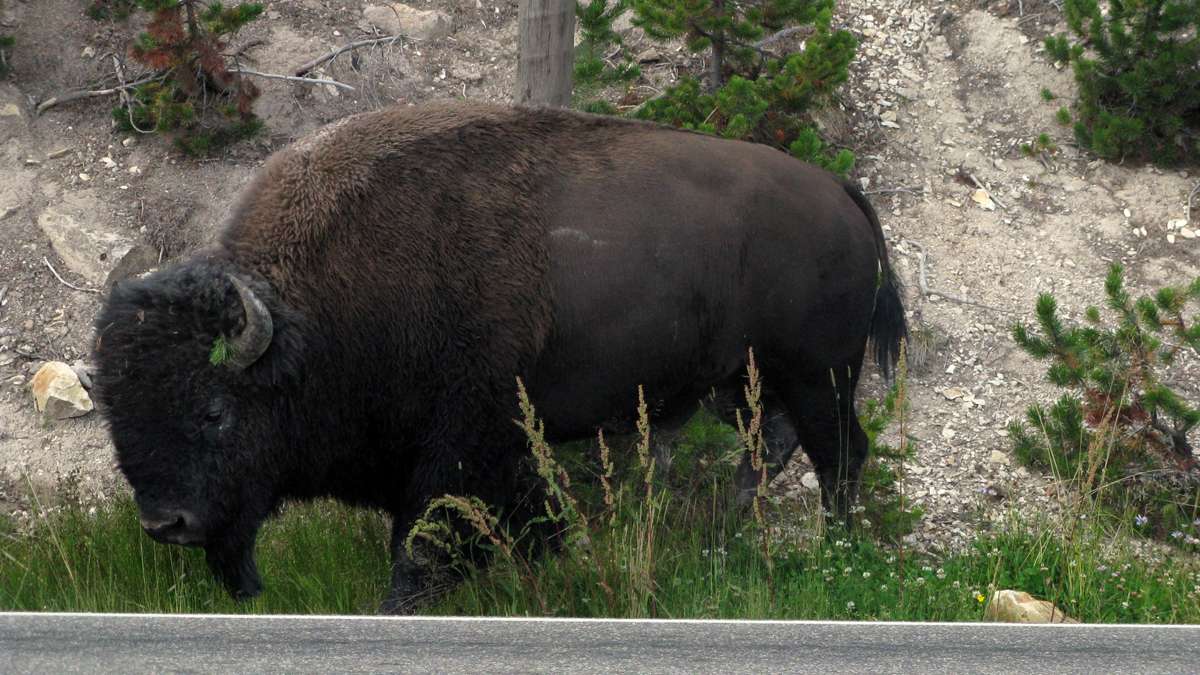The buffalo roam … anywhere they want to at Yellowstone
Summer traffic jams are different in Yellowstone National Park.
For one thing, drivers look forward to them, because in Yellowstone, tie-ups aren’t caused by bridge openings or overturned tractor trailers. It’s bison, merging.
Anywhere they want
Like a furry roving repair crew, here they come, strolling the Grand Loop Road, which crisscrosses Yellowstone in a giant figure eight. Car windows roll down, doors open, and tourists holding long lenses emerge. Backpack-laden cyclists stand gingerly on the narrow shoulder, avoiding motor homes and wildlife.
Despite warnings that bison can run 40 miles an hour, jump fairly high, and should be given a wide berth, people maneuver to get a better look. Rangers remind visitors that bison will charge if startled or threatened. They pay no mind and dare natural selection by setting up lawn chairs and tripods.
From millions to almost none
It wasn’t always so easy to find bison here — or anywhere on the Great Plains. Yellowstone’s earliest visitors, traveling by stagecoach, may not have seen any.
Bison is the proper name for the American buffalo, the largest land mammal on the continent. Bison stand 5 ½ feet tall and can weigh more than 2,000 pounds, much of it carried in huge sloping shoulders that balance on delicate, Babe Ruth-type legs. Bison have inhabited the plains for hundreds of thousands of years, much longer than humans have, and are revered by Native American who relied on them for nourishment and shelter. Native tribes see their own experience in that of the bison, which, like themselves, suffered under the arrival of interlopers. In the last century, Native Americans have interpreted the resurgence of the bison from near-extinction as a hopeful harbinger for themselves.
Living on grasses and sedge, bison once ranged from Alaska to Mexico, but things changed in the 17th and 18th centuries. Native Americans began to hunt on horseback rather than foot, making it easier to capture and kill bison, and Europeans arrived, increasing demand for meat and hides. Railroads made the plains more accessible to commercial and sport hunters.
From a population estimated at 30 million in 1800, bison had almost disappeared by 1890. In 1902 however, a herd of 25 were found deep in Yellowstone, and park managers painstakingly began to reestablish a wild, free-ranging herd. The effort has been successful — many would say too successful.
Crossing the road
Even well south of Yellowstone, which lies mostly in northwest Wyoming, it isn’t unusual to encounter bison. Two friends and I were hardly away from Jackson Airport, 60 miles south of the park, when we saw our first bison, crossing U.S. 191 and in no particular hurry. With the Grand Tetons in the background, he looked like he’d just trotted off a nickel. Inside the car, we yelled “Look! Look!” and grabbed cameras. Little did we know how many such photo ops awaited, because it was mating season.
Yellowstone visitors soon learn that bison control the itinerary. If bison are on the move, tourists are going to wait. The average bison jam adds a half-hour to most commutes through Yellowstone’s Hayden Valley, their favorite meeting place. In summer, they traverse the rolling hills singly and in groups, crossing back and forth over the Grand Loop Road, gliding between and around vehicles, occasionally making a chuffing noise that might mean anything from “Hi there,” to “Get out of my way or I will impale your car.”
The scariest thing is if a bison stops and stares at you, as though it is deciding. That’s when you recall the visitor center video in which a bison uses its short, curled horns to throw a foolish tourist into a tree.
Success breeds controversy
Founded in 1872, Yellowstone is the world’s first national park, and it is enormous. With 2.2 million acres, it can almost hold Delaware and Rhode Island. Though there are 67 mammal species in the park, the bison is the wildlife ambassador seen most often and most closely.
Their proliferation in Yellowstone is a problem, because the herd has grown beyond what park managers believe can be comfortably supported. In winter when they migrate, bison spill across park boundaries, particularly along Yellowstone’s northern edge in Montana, cattle country, where migrating bison are viewed as a threat.
Ranchers want bison kept away from their herds, because they carry brucellosis, a disease that causes cattle to abort calves. Elk, another Yellowstone resident, also carry the disease. While about half of Yellowstone’s bison have tested positive for brucellosis, according to KXLH in Boseman, MT, 20 brucellosis transmissions to cattle since 2000 have come not from bison, but from elk.
Still, bison are the focus, in part because they compete with cattle for grazing land. The larger Yellowstone’s herd, the greater the winter migration and the chance for disease transmission and overgrazing. Despite attempts to decrease the number of bison through culling, there were an estimated 4,800 bison in Yellowstone this summer, many more than the desired 3,000 to 3,500. This coming winter, park managers have proposed culling 900, about 19 percent of the herd. But culling is difficult and controversial, especially when the species was once endangered, and culling takes place in a national park.
The culling controversy
Congress prohibits hunting in Yellowstone, so previous herd reductions involved capturing and transporting bison for slaughter. The park service contracted with the Intertribal Buffalo Council to transfer bison and distribute the byproducts to Native American tribes. Outside Yellowstone, hunts are organized with the authorization of Montana and four Native American tribes but, not surprisingly, have led to protests, ugly confrontations, and legal action.
Signaling that more humane and effective solutions are needed, Montana’s Supreme Court in March 2014 affirmed a ruling that bison be permitted to roam outside Yellowstone in winter without being hunted. The ruling gave bison the same freedom as elk, wolves, grizzlies, black bears, pronghorn, and other species native to Yellowstone: to come and go as they please.
he National Park Service is exploring methods of managing the burgeoning herd more consistent with protecting wildlife and natural habitat. In July, one website reported a proposed quarantine program that would segregate brucellosis-free bison so they could be relocated to groups who wish to begin new herds.
Whatever Yellowstone does about overpopulation, it’s a safe bet that there will still be plenty of bison to stop traffic in the future. Let’s hope that the tourists stay safe and the only thing the bison throw off are schedules.
WHYY is your source for fact-based, in-depth journalism and information. As a nonprofit organization, we rely on financial support from readers like you. Please give today.






